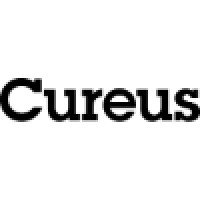 “The therapeutic potential of cannabinoids has been truly constrained heretofore due to their strong psychoactive effects and their high lipophilicity. In this context, precisely due to the lack of psychoactive properties, cannabidiol (CBD), the second major component of Cannabis sativa, arises as the phytocannabinoid with the most auspicious therapeutic potential.
“The therapeutic potential of cannabinoids has been truly constrained heretofore due to their strong psychoactive effects and their high lipophilicity. In this context, precisely due to the lack of psychoactive properties, cannabidiol (CBD), the second major component of Cannabis sativa, arises as the phytocannabinoid with the most auspicious therapeutic potential.
Hence, the incorporation of CBD in lipid nanocapsules (LNCs) will contribute to overcome the dosing problems associated with cannabinoids.
Herein, we have prepared LNCs decorated and loaded with CBD for glioma therapy and screened in vitro their critical parameters. On the one hand, we have encapsulated CBD into the oily core of LNCs to test their in vitro efficacy as extended-release carriers against the human glioblastoma cell line U373MG. The in vitro antitumor effect was highly dependent on the size of LNCs due to its pivotal role in the extent of CBD release.
Effectively, a comparison between two differently-sized LNCs (namely, 20-nm and 50-nm sized carriers) showed that the smaller LNCs reduced by 3.0-fold the IC50 value of their 50-nm sized counterparts. On the other hand, to explore the potential of this phytocannabinoid to target any of the cannabinoid receptors overexpressed in glioma cells, we decorated the LNCs with CBD. This functionalization strategy enhanced the in vitro glioma targeting by 3.4-fold in comparison with their equally-sized undecorated counterparts.
Lastly, the combination of CBD-loading with CBD-functionalization further reduced the IC50 values. Hence, the potential of these two strategies of CBD incorporation into LNCs deserves subsequent in vivo evaluation.”
https://www.ncbi.nlm.nih.gov/pubmed/30472144
https://www.sciencedirect.com/science/article/abs/pii/S0939641118311366?via%3Dihub








.jpeg) “Approximately one-third of patients with epilepsy presents seizures despite adequate treatment. Hence, there is the need to search for new therapeutic options.
“Approximately one-third of patients with epilepsy presents seizures despite adequate treatment. Hence, there is the need to search for new therapeutic options. 